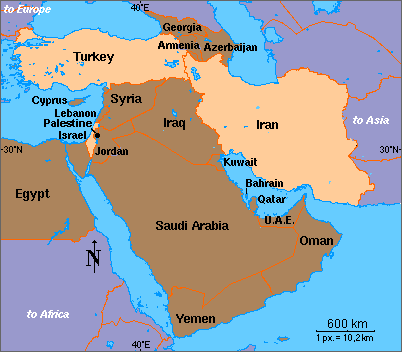
The Iranian Islamic Revolution which took place in 1979, is considered one of the greatest revolutions in human history. After years of suppression and abuse by the ruling monarchy and Shah Reza Pahlavi, the peoples of Iran organized and stood up to the brutal leader. After a year of protest, the Shah was forced to leave office and the new popular leader by the name of Ayatollah Khomeini came to power. He transformed the monarchy into a theocracy called an Islamic Republic. For most Americans the idea of allowing a theocracy to rule and the combination of government and religion seems absurd, but their is good reason for the revolution.
In 1951 a popular politician by the name of Dr. Mohammad Mossadeq was elected prime minister of Iran. Mossadeq believed that it was essential for Iran to nationalize its oil, which was at the time under the control of a British company. His nationalization efforts unfortunately where in opposition to the Shah's views of westernization. In 1952 the Shah forced Mossadeq to resign from his position of prime minister and allowed the British to regain control of Iranian oil. In resistance, Mossadeq called for the Iranian people to protest the Shah's decision. By 1953, due to increasing public pressure and threats against the monarch, the Shah was forced to leave the country. This allowed Mossadeq to return to power and reinstate the nationalization of Iranian oil. The nationalization of oil sparked fear for Britain and the US who wanted a cheap and reliable source of oil from Iran. The fear of lack of oil led to secret meetings between British agents and the CIA to organize a coup d'etat against Mossadeq. The operation, known as Operation Ajax, spread propaganda against Mossadeq and finally in August the coup was successful as Mossadeq was overthrown and put in jail. The US then reestablished the Shah as the Iranian leader and Iranian oil was not nationalized.
During the next twenty years Iran lived under the brutal reign of the Shah. Iranian freedoms of religion and political activism were repressed and political dissenters were put in jail. The Shah's secret police, the SAVAK, brutally enforced the laws as many were tortured and killed for their resistance. Many linked the Shah and his unfair policies to the United States because it was the US who reestablished the unpopular Shah and continued to support him. This led to much Shah and US dissent as more and more Iranians felt disenfranchised. By 1978 Iranians once again filled the streets in protest. This time they were rallied by an exiled religious leader thousands of miles away in France. His name was Ayatollah Khomeini and through taped messages his revolutionary words spread throughout Iran. The Shah who feared overthrowal declared martial law and the SAVAK became even more brutal than the past. In 1979 the call for change was too much for the Shah as he fled to Egypt. After fifteen years of exile the Ayatollah Khomeini was able to return to Iran and was met by millions of supporters in the capital city of Tehran.
Khomeini promised the people of Iran that the religious clerics only wanted to lead the revolution and then would step aside to allow the people to decide what type of government they wanted. He promised Iranians freedoms of speech and organization. He promised that their would be no political oppression and killings. He promised more economic equality and opportunity for Iranians. Unfortunately, the Ayatollah did not deliver on any of these promises. Instead of allowing the people to choose the type of government, he established a theocracy and the Islamic Republic. He punished political dissenters and criticizers of his regime by imprisoning and killing thousands. He squashed all opposition in the name of Islam. Finally his efforts for economic equality failed miserably as the gap between the rich and poor grew as did corruption.
The Ayatollah Khomeini fooled the Iranian people by using religion as a cover up. His promises of opportunity and more freedom were not followed up. Iranians now see that they got rid of one terrible ruler and replaced him with another terrible ruler. Fortunately after the death of Khomeini and over recent years, freedoms and economic opportunity have increased. People enjoy may enjoy greater freedoms, but still regret empowering a theocracy. Although many Iranians are religious, they still desire a secular democracy in power. This democracy they wish attain by themselves and not with military force by any outside country. They believe that they will one day once again stand up and overthrow a tyranny.
Video of Iranian Revolution:
http://www.youtube.com/watch?v=kY0ixG94cHE

1 comment:
Kia,
I find it interesting that the Iranian government was overthrown to be made a theocracy. That in fact that theocracy ended up not being a wise decision. When, in your opinion do you think that the Iranian government will be able to have a government that will suit their needs . Do you think a more democratic type of government would thrive through the increased interests of freedom that Iran is presenting or do you feel they need to establish a "custom" government.
Thanks
Robert Lapp
Post a Comment